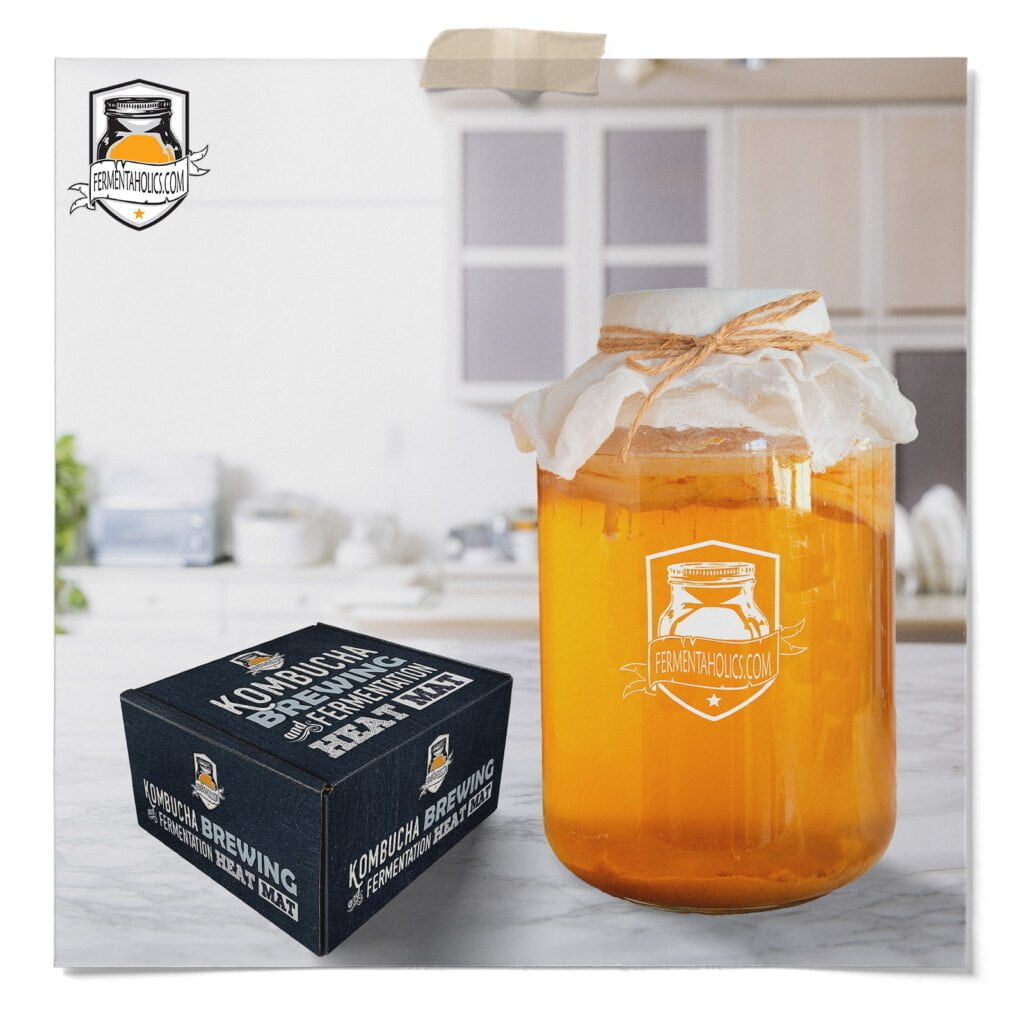

Did you know that nearly all issues that arise when brewing kombucha are temperature related? It’s true, that’s why it’s so important to have the temperature under control when making kombucha. When your brew is kept within the optimal temperature range, all the pieces seem to fall right into place. If you’re here, chances are, you’re fermenting outside the recommended kombucha temperature range of 75-85 degrees Fahrenheit. The majority of kombucha brewers will have their kitchen colder than this at some point during the year. So let’s go over what happens at lower temperatures and the best ways to bring up the heat.
Your SCOBY will be happy, balanced, and active when kept between 75-85°F. But when the temperature lowers, the fermentation process slows down with it, and eventually to a halt if it gets low enough. When this happens, the first thing you’ll notice is your kombucha brew is taking longer to ferment than it should. Depending on the temperature, this can add days to weeks to your timeline. So you can’t expect the 7-10 day brew time often quoted when you’re not at the proper temperature. When the culture stalls, the fermentation stalls and the acidification of your brew stalls too. Without this added acidity protecting your batch, it becomes at risk for mold, which leads us to problem number two.
Adding kombucha starter tea to our kombucha brew inoculates it with our culture of bacteria and yeast. The starter tea is acidic, so it also lowers the pH. The starting kombucha pH of 4.5 or less is required because it is too harsh for undesirables to survive, warding off harmful pathogens. As kombucha ferments, the pH continues to drop, making it more acidic. When the kombucha culture is under stress, the acid levels do not increase as quickly as they should. This makes your brew more likely to develop mold. This is why we say cold equals mold.
Much like me, kombucha loves warm weather. Depending on where you live, room temperature may be lower than the ideal kombucha temperature. So the first thing you’ll need is a thermometer to take a temperature reading. We highly recommend this strip thermometer. These strips are adhesive and stick to the side of your brew jar. Once attached, it will provide a continuous temperature reading. This will allow you to monitor your temperature and make adjustments accordingly.
First, and probably the best option, is to purchase a kombucha heat pad. This is a permanent fix and isn’t too inexpensive. Especially when you take into consideration how much money you’re saving by brewing kombucha at home. These kombucha warmers are gentle but efficiently warm your kombucha so it can live its best life. For maximum heat, these mats are wrapped around your brew vessel and secured with a band. For less heat, you can place the heat mat flat on a surface and then place your fermenter on top.
